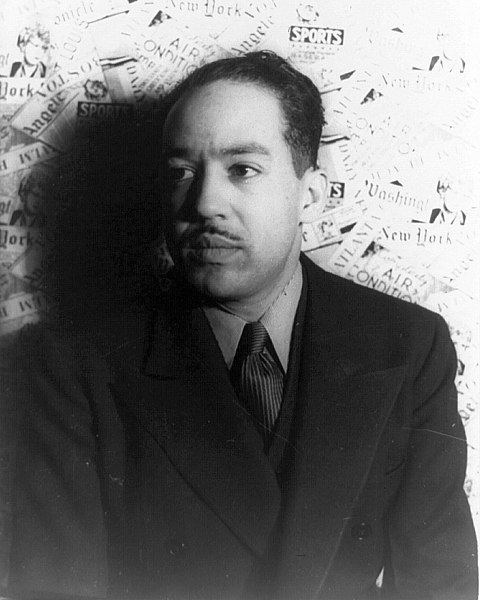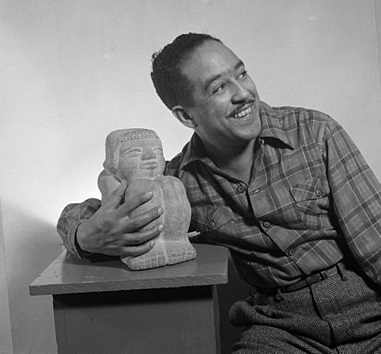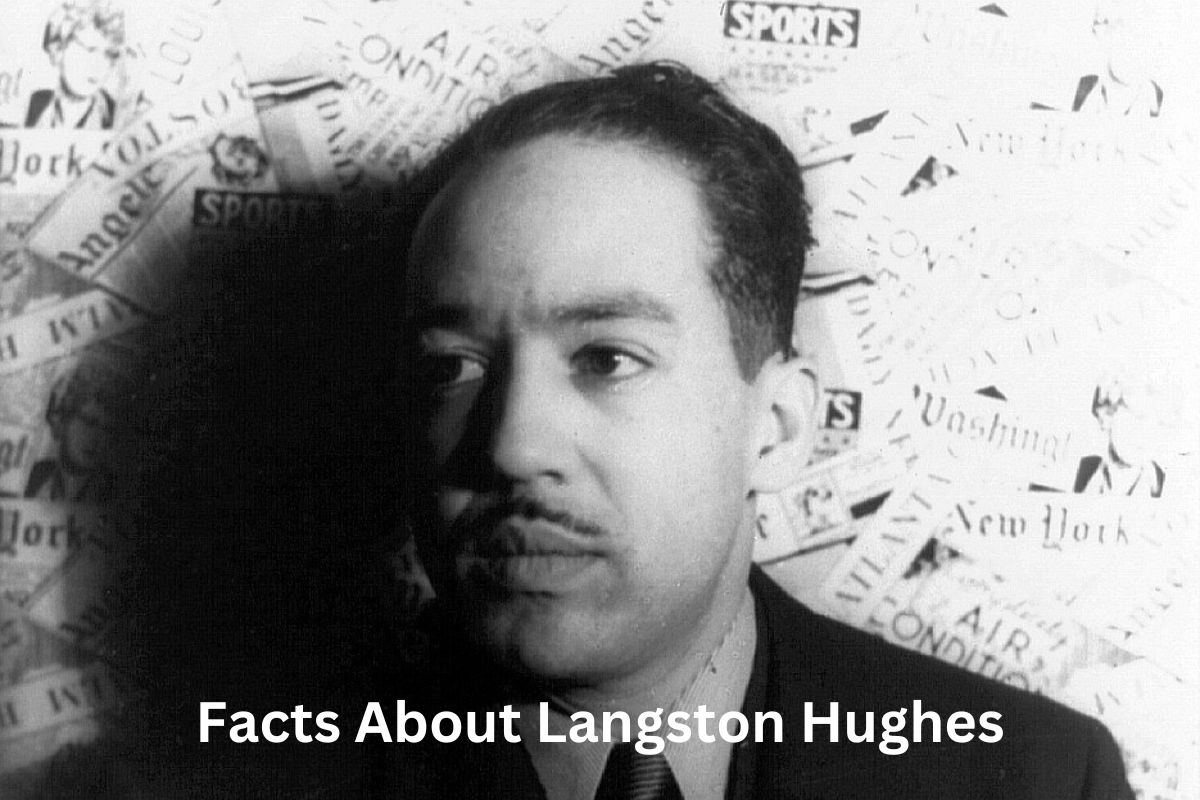Langston Hughes (1902-1967) was an influential American poet, novelist, playwright, and social activist.
Born in Joplin, Missouri, Hughes became one of the leading figures of the Harlem Renaissance, a cultural movement that celebrated African American art, literature, and music in the 1920s and 1930s.
His powerful and evocative poetry captured the experiences and struggles of African Americans, addressing themes of racial injustice, identity, and the African American working class.
Hughes’s writings, characterized by vivid imagery and a rhythmic language infused with jazz and blues influences, continue to be celebrated for their contribution to American literature and their role in promoting racial pride and cultural awareness.
Langston Hughes Facts
1. Langston Hughes was born on February 1, 1902
Langston Hughes was born on February 1, 1902, in Joplin, Missouri. He grew up in a racially divided America, experiencing the challenges and discrimination faced by African Americans during that time.
Also Read: Langston Hughes Timeline
His upbringing in a segregated society deeply influenced his later work, as he sought to bring attention to the struggles and triumphs of African Americans through his poetry, novels, and plays.

2. He was a poet, novelist, playwright, and social activist
Hughes was a multifaceted artist, excelling in various forms of creative expression. He is best known as a poet, with his poetry playing a crucial role in shaping the literary landscape of the Harlem Renaissance.
His powerful and evocative verses captured the essence of African American experiences, from the mundane to the extraordinary.
Also Read: Accomplishments of Langston Hughes
Through his poetry, he celebrated the beauty, resilience, and cultural heritage of African Americans, while also addressing the harsh realities of racism and social injustice.
3. Hughes was a leading figure of the Harlem Renaissance in the 1920s and 1930s
Langston Hughes emerged as a prominent figure of the Harlem Renaissance, a vibrant cultural movement centered in Harlem, New York City, during the 1920s and 1930s.
Also Read: Timeline of the Harlem Renaissance
The Harlem Renaissance celebrated African American art, literature, music, and intellectual thought, and it became a significant platform for African American artists to challenge stereotypes, express their unique perspectives, and assert their cultural identities.
Hughes, along with other notable figures such as Zora Neale Hurston and Countee Cullen, played a pivotal role in shaping the literary and artistic renaissance of the time.
His work became emblematic of the movement’s spirit and its mission to create a distinct and powerful African American artistic expression.

4. His famous poem, “The Negro Speaks of Rivers,” was written when he was 18 years old
One of Langston Hughes’s most famous poems is “The Negro Speaks of Rivers,” which he wrote at the age of 18. The poem is a powerful and poignant exploration of the African American experience and identity.
Through rich imagery and metaphorical language, Hughes connects the history and culture of African Americans to the ancient and enduring presence of rivers.
The poem serves as a reflection on the deep roots and resilience of the African American community, drawing attention to their contributions throughout history.
5. Hughes incorporated jazz and blues influences into his writing
Hughes had a profound appreciation for African American music, particularly jazz and blues. He saw music as an integral part of African American culture, and its rhythms and melodies heavily influenced his writing style.
Hughes often incorporated elements of blues and jazz into his poetry, creating a unique fusion of words and musicality.
By infusing his work with the spirit and improvisation of jazz, he captured the essence of African American life and showcased the interconnectedness of music, poetry, and the experiences of his community.
Hughes also collaborated with jazz musicians, such as Charles Mingus and Randy Weston, further highlighting the symbiotic relationship between literature and music.
6. He wrote novels, short stories, plays, and essays.
Hughes’s writing encompassed a wide range of literary genres. In addition to poetry, he wrote novels, short stories, plays, and essays.
His novel “Not Without Laughter” (1930) explores the life of a young African American boy growing up in a small Kansas town, grappling with issues of race, family dynamics, and personal identity.
His play “Mulatto” (1935) delves into the complexities of mixed-race identity and the impact of racial discrimination. Hughes’s ability to engage with various forms of storytelling allowed him to capture the multifaceted experiences and perspectives of African Americans.
7. Hughes traveled extensively, gaining diverse cultural experiences
Langston Hughes had a strong sense of wanderlust and embarked on extensive travels throughout his life. His journeys took him not only across the United States but also abroad.
He spent significant periods in Europe, Africa, and the Caribbean, immersing himself in different cultures and gaining diverse perspectives. These travels had a profound impact on his writing, broadening his understanding of global issues and influencing his artistic sensibilities.
Hughes’s exposure to various cultures enriched his work, allowing him to weave together universal themes while maintaining a distinct African American voice.
8. He used his writing to advocate for civil rights and challenge racial inequality
As a social activist, Langston Hughes used his writing as a platform to advocate for civil rights and challenge racial inequality. Through his literary works, he aimed to bring attention to the systemic injustices faced by African Americans and to promote racial pride and cultural awareness.
Hughes believed in the power of art to effect social change and was actively engaged in political activism. His work became a voice for the marginalized, empowering African Americans and contributing to the advancement of the African American literary tradition.
9. Hughes received several awards and honors for his literary achievements
Langston Hughes received numerous accolades and honors for his literary achievements. He was awarded several Guggenheim Fellowships, which provided financial support for him to continue his creative endeavors.
In 1943, he received the Anisfield-Wolf Book Award for his collection of poetry titled “The Weary Blues.”
Additionally, Hughes was honored with the Spingarn Medal by the National Association for the Advancement of Colored People (NAACP) in 1960 for his outstanding contributions to African American literature and social activism.
10. He passed away on May 22, 1967, in New York City
Langston Hughes passed away on May 22, 1967, in New York City. Despite his physical departure, his legacy lives on.
His poetry and writings continue to be studied in schools and universities, and his work remains influential in shaping discussions on race, identity, and the African American experience in America.
Hughes’s impact on American literature and culture is widely recognized and celebrated, and his pioneering spirit and commitment to social justice continue to inspire generations of writers, artists, and activists.
